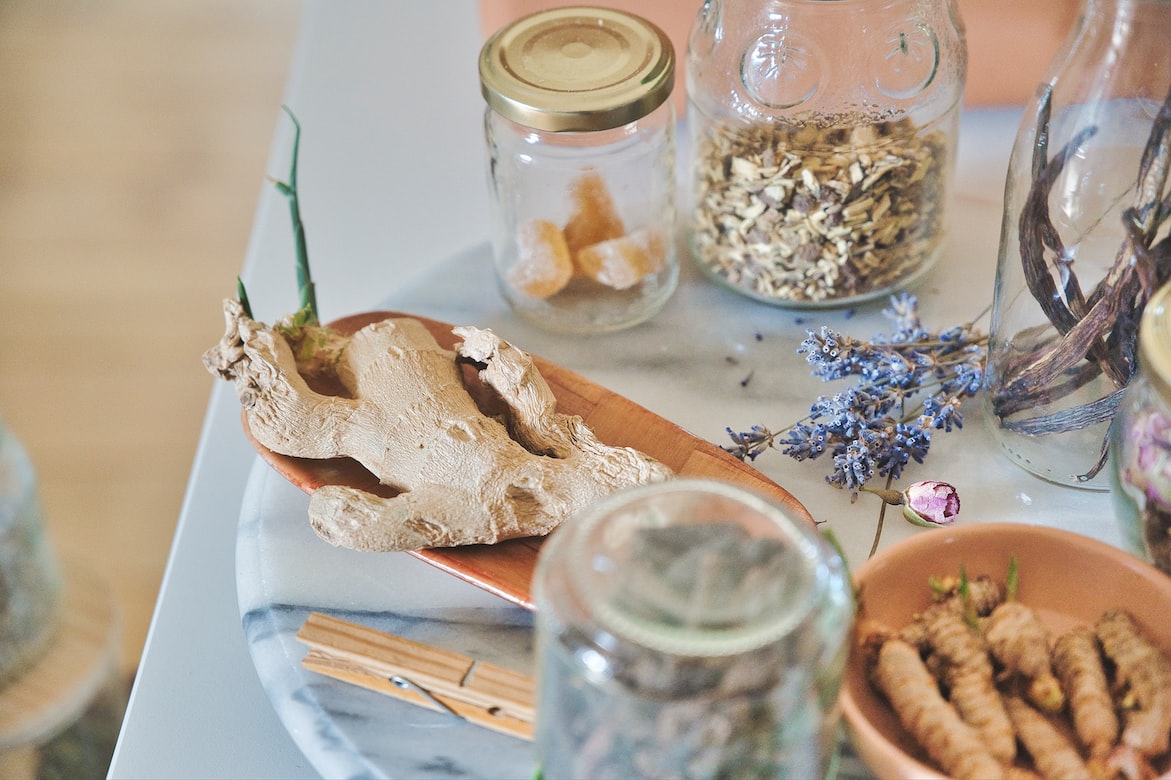
What is Organic Galangal and How Do I Use It?
|
|
Time to read 6 min
|
|
Time to read 6 min
If you’re partial to Asian cooking, you may have come across an ingredient called galangal during your search for new recipes to try. Upon looking for information about this organic spice, you may also assume that galangal is a fancier word for ginger. Though both roots are part of the same family, which also includes turmeric, there are several differences between the two.
In this article, we’ll cover what galangal is, how it differs from ginger, and how to use it in Asian cuisine.
Galangal is a root that resembles ginger, which is likely why this ingredient is also known as Thai ginger. However, there are differences between galangal and ginger, which will be covered later in this article.
Galangal is frequently used in Asian cuisine, such as dishes from Malaysia, Cambodia, Vietnam, Indonesia, and Thailand.
The basic differences between the two roots are the texture, scent, and color. Galangal is tougher, more fragrant, and paler in color than ginger.
There are three main types of galangal, known as light galangal, lesser galangal, and greater galangal. The lesser version originates from China and has a more tart, peppery flavor than the others. Greater galangal is more mild in flavor, and the plant that this root belongs to tends to be taller than other galangal types. Greater galangal is grown in Indonesia, namely on Java Island. Light galangal is grown in Southeast India and this type is the most similar to traditional ginger. As such, it’s the most common of the three types.
In addition to the three varieties of galangal, this herb can also come in both fresh and dried preparations. The fresh version, as with most fresh organic spices and herbs, is more flavorful and robust than the dried version. Dried galangal is also quite flavorful, but it tends to pale in comparison with a fresh product.
There are several similarities between ginger and galangal, which can make it difficult to tell the two apart. However, when you know which differences to look for, it becomes easier to determine which herb you’re looking at.
Both herbs are rhizomes in the ginger (Zingiberaceae) family, which are root-like segments of a plant. These roots can be used to grow new plants for both root types.
The key difference between ginger and galangal is the flavor. Ginger has a pungent, spicy, somewhat sweet taste while galangal has a citric, almost pine-like flavor. Each herb has its own recipe applications so ginger and galangal should not be used interchangeably.
On top of the spicy, robust flavor of galangal, eating this herb may also present several health benefits. In fact, the galangal root has been used in Eastern medicine for millennia as a remedy for certain health conditions.
According to studies, some of the benefits that come from eating galangal may include:
Preparing and cooking galangal is much like preparing and cooking ginger. The herb needs to be peeled with a paring knife or vegetable peeler. From there, the galangal should be cut into very thin slices, grated, or minced. This is because the herb is dense, relatively dry, and can be difficult to chew when sliced too thick.
Dried or powdered galangal is easier to prepare and cook with, as this form only needs to be measured out with a measuring spoon or cup and added to existing recipes. Though the dried version is a little more muted, galangal is still a strong spice, so even if you’re using the dried variety, use only a small amount and taste what you’re cooking frequently to ensure the right mixture.
FreshJax Carries Galangal as one of our Single-Ingredient Spices. We are very proud to say that these Certified Organic Spices are exactly what we call them: Single-Ingredient. They contain no fillers, no preservatives, no dyes, and no radiation (we can't believe we even need to say that, but…)
And why don't we include any of those things?
BECAUSE WHOLESOME IS EVERYTHING.
Traditionally, galangal is used in curries, sauces, soups, and stir-fries. However, many Asian dishes call for galangal, so you’ll likely find quite a few Asian recipes that include galangal in their list of ingredients.
Common dishes that use galangal include:
If you use fresh galangal for cooking, you probably want to find an effective way to store what you have left. One of the best ways to store your organic spices is by lining the inside of a plastic bag with paper towels, then placing the leftover root into the bag and sealing it. Galangal can be stored this way for up to three weeks if it’s kept in the refrigerator.
Another option is to slice the remains of your galangal root into thin pieces, then either seal them in an airtight container or plastic bag. This method can keep your leftovers fresh for up to two months if you store the bag in your freezer.
Dried galangal is the easiest to store, as it only needs to be covered and kept in a cool, dry place. If your galangal is powdered, keep it stored in an airtight container, as this will help keep it as fresh as possible for up to a year.
Galangal is relatively easy to prepare and cook with, so long as you carefully gauge how much of the herb you’re adding to your Asian cuisine dishes. Feel free to experiment with galangal in other foods. You might find that the addition of galangal takes many of your savory recipes to the next level.
Did you already know all about this amazing spice?
Did you assume it was just ginger?
Did we get to the “root” of the story?
Leave us a comment and feel free to share this article with your friends and family.


